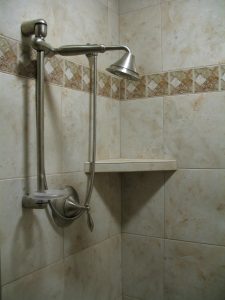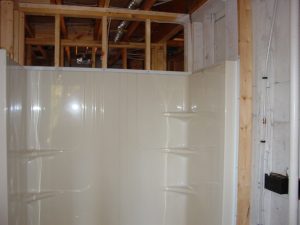
A common renovation in a home is the bathroom. We want them to be larger than they were built-in most older homes. Styles change and we want a fresh look. On occasion we want to add grab bars to make them more functional. There are many reasons to change or update a bathroom – the most important may be energy efficiency and comfort.
Does your bath water get cold rather fast in the winter? Do you have mold growing on the walls in the corner of your bathroom? These are building science issues that can be addresses while you are updating your bathroom.
If you answered yes to either of these questions, you probably have a bathroom that is wasting energy and has poor indoor-air-quality. Many times there is no insulation behind the shower / tub enclosure – even in new homes. The plumber comes first during construction and there are many insulation companies that get paid to move fast and not to think about creating a thermal envelope with no gaps or cracks. This causes a huge gap in the performance of your home envelope.
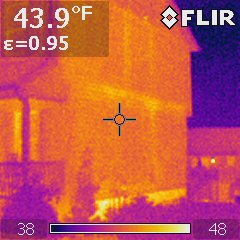
You will often see on thermal imaging the places where there is no insulation or thermal bridges. This can often be seen around and behind the tub enclosure. If there is no air barrier installed or the insulation is left out, this is a huge hole in your envelope. Air leaks cause this area to stay cold in the winter and hot in the summer. This leads to potential moisture problems within the wall cavity behind the enclosure.
If the wrong kind of insulation is installed, or insulation is installed wrong, there can still be gaps in the thermal envelope. Here you see that the fiberglass is stuffed in and does not fill the void. When using fiberglass, you have to take time to make sure it is installed per manufacturers recommendations and use caulk to get things air tight. You should also address the wood studs and thermal bridge they cause when left exposed on the inside and outside.
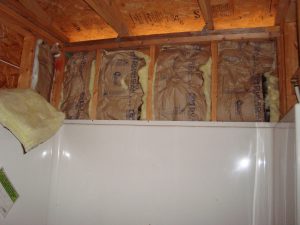
A solid air barrier can be achieved and your hot bath will last longer if you use spray foam insulation behind the tub / shower enclosure. I like the added step of installing an air barrier as well.
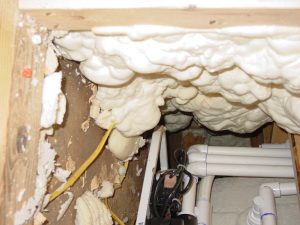
Taking these precautions during construction (and setting the expectations during design) will provide you with a comfortable, healthy, energy-efficient bathroom renovation. Why spend the money on only aesthetics when you can add comfort and energy efficiency when renovating?
